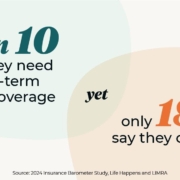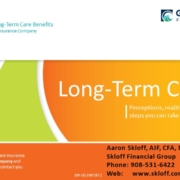Roth IRA Conversions – Independent Press – 03/05/14
The Independent Press
Money Matters – Skloff Financial Group Question of the Month – March 5, 2014
By Aaron Skloff, AIF, CFA, MBA
Q: Through diligent savings and 401(k) rollovers we’ve accumulated large pre-tax Individual Retirement Accounts (IRAs). What are the implications of converting them into Roth IRAs?
The Problem — Taxes on Withdrawals from Pre-Tax IRAs
Your diligence has paid off, but could present large tax obligations in the future. The combination of pre-tax savings and the sheltering of taxation of capital gains, dividends and interest on those savings all contribute to large pre-tax IRAs. One of the problems with pre-tax savings is the tax obligations on withdrawals. If you take withdrawals before age 59 1/2 you are subject to a 10% penalty and income taxes. If you take withdrawals after 59 ½ you avoid the10% penalty, but you are still subject to income taxes. With few exceptions, you must begin taking withdrawals in the form of Required Minimum Distributions (RMDs) by April 1 of the year after you reach age 70 ½. Unfortunately the RMD percentage increases each year.
Fair or unfair as it may be — the U.S. has a graduated income tax. The graduated income tax system assesses higher tax rates on higher income levels — the higher your income, the higher your tax bracket. Take too large of a withdrawal, even if it is an RMD, and you could be bumped up to a higher income tax bracket (marginal income tax rate).
The Solution — Roth IRA Conversions
If you convert pretax Traditional IRA savings to Roth IRA savings you gain two tremendous benefits. The first benefit is withdrawals from Roth IRAs are exempt (free) from income taxes. This can have a positive domino effect, avoiding or reducing: capital gains and dividend taxes, net investment income taxes and itemized deductions and personal exemptions phaseouts (PEP). The second advantage is the avoidance of RMDs. Since Roth IRAs are not subject to RMDs, you can control when you make withdrawals or avoid them entirely. By avoiding or delaying withdrawals from your Roth IRAs you can further preserve your wealth or create a larger estate.
Note: your spouse can inherit your Roth IRA and continue avoiding RMDs, while non-spouses are subject to tax free RMDs.
By shrinking your pre-tax savings IRA savings through Roth IRA conversions you gain the benefit of unnecessary taxes on withdrawals from those pre-tax savings.
Timing Roth IRA Conversions. All these benefits come at a cost. When you convert pre-tax IRA savings to tax free Roth IRA savings you could be subject to income taxes at the time of the conversion. This is where the graduated income tax could work to your advantage. The top marginal income tax rate is 39.6%. But, the marginal income tax rate is 15% on up to approximately $74,000 of income in 2014 for married couples filing jointly. You are exempt from taxes on capital gains and qualified dividends on the same income and filing status. Translation: if your income falls below approximately $74,000 converting now can save you from higher income and investment taxes in the future. Even if your income exceeds $74,000 converting now can prevent you from being bumped up to a higher income and investment tax bracket in the future. So, the timing of your conversion is critical to optimizing your current and future taxes. The benefits of the conversion assume you pay the tax obligations from assets outside of the IRAs.
Numbers Speak Louder than Words. Let’s look at an example of a couple converting $150,000 of pre-tax IRA savings to $150,000 of tax free Roth IRA savings. If they convert the full amount in one year they could create a negative domino effect, creating or increasing their: tax bracket, capital gains and dividend taxes, net investment income taxes and itemized deductions and personal exemptions phaseouts (PEP). If they complete partial Roth IRA conversions, say $30,000 over five years, they could avoid the negative domino effect – reaping big tax savings.
Action Steps
Work closely with your Registered Investment Adviser (RIA) and tax professional in evaluating or completing a full or partial Roth IRA conversion. Keep good tax records leading up to, during and after the conversions. Utilize IRS Form 8606 to avoid any unnecessary taxes.
Aaron Skloff, Accredited Investment Fiduciary (AIF), Chartered Financial Analyst (CFA), Master of Business Administration (MBA) is CEO of Skloff Financial Group, a Registered Investment Advisory firm. He can be contacted at www.skloff.com or 908-464-3060.












